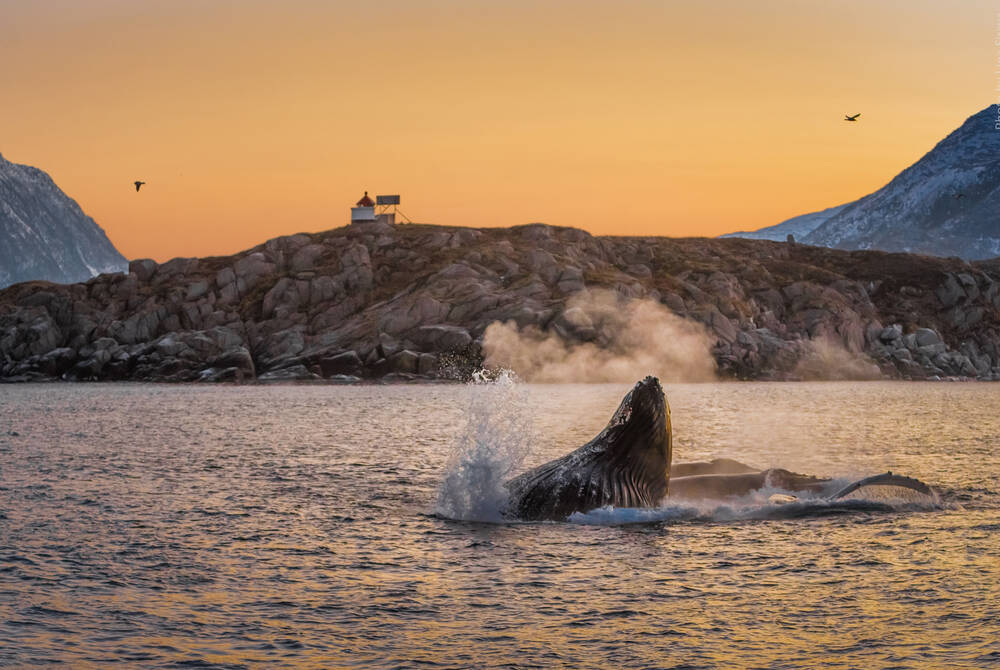"Will I see a polar bear?" It's the first question most people ask when they're thinking about travel to Spitsbergen, the only largest (and only inhabited) island of the Svalbard archipelago. And upon travellers' return, it's the first question they are asked, as well – "did you spot any polar bears?"
Though the romance of Svalbard was heightened by the popularity of Philip Pullman's His Dark Materials series, where the region was home to the magical, soldierly bears, it carries an allure of its own. Polar bears, after all, do live up here in larger numbers than people – approximately 3,000 bears share their home with only about 2,600 humans. And the climate threat to polar bears' habitat means they have been the furry faces of many an environmental campaign for years. But what is it actually like to spot them in the wild?
Spot polar bears between May and September
To most easily see polar bears, we recommend travelling between May and September. Travelling in the winter means encountering 24 hours per day of darkness, making it nearly impossible to spot a bear at a distance (and yes, you will want to keep a healthy distance). Polar bears are also largely water-based animals, and in the winter the sea ice is frozen too solidly for most ships to get through the fjords.
However, travel in the summer months means long stretches of daylight during the midnight sun season, as well as easy cruising. Since Svalbard is mostly uninhabited by humans, ships are also the most comfortable way to get out into the wilderness.
Know the safety guidelines

Polar bear warning sign at the edge of Longyearbyen settlement
Polar bears are certainly dangerous – they can run up to 40 kilometres an hour, have long, sharp teeth and claws and quickly turn ferocious when cornered or protecting their cubs. But Svalbardians have learned to live with these occasionally unpredictable neighbours, and the result is that since 1971, only five people have died from polar bear attack.
The first thing you'll learn is not to leave settlement boundaries without a flare gun, a rifle, and someone who knows how to use both. Beyond that, trekkers are warned to keep their campsites off of beaches, where the bears hunt, and to rig alarms in case a curious bear is drawn in by the smell of food (which you'd do well to keep very secure and out of your tent). In settlements like Longyearbyen, building doors tend to be left unlocked, allowing for a quick retreat should a bear be spotted in human-inhabited areas.
Photographing the polar bears' habitat
Some tips for capturing a photograph of the bears:
- A tele lens will be an advantage, as you won't be getting up close to any bears you spot – they may be on a somewhat distant ridge, viewed from your ship. A tripod will be of great help as well, especially when using long lenses.
- Bring appropriate gear to protect your camera from the wet, and your hands from the cold. Mittens with a slim glove lining are ideal, so you can use your fingers without exposing them.
- Practice photographing moving subjects before you leave home, since these bears aren't going to stand still and smile
- Use a polarising filter, particularly when you are near the water, to avoid glare. Some photographers like to use a daylight filter (80A or thereabouts) against the snow.
- Turn off your flash and all sounds – you don't want to scare the bears, or any of Svalbard's rich birdlife, away.

Svalbard's polar bears are the world's best cared-for
We've said it before, and it's true – Svalbard's polar bears are, despite the melting sea ice damaging many of their cousins' communities, in pretty good shape. In fact, in a report released at the end of 2015, it was determined that the local polar bear population had increased by 42% over recent years, and the animals were looking healthier than ever.
Polar bears have long been protected by anti-poaching laws, as well as a provision entitling the governor of Svalbard to ownership of any part of the bears' bodies, ensuring they are not removed from the land. There are also laws preventing to construction of roads beyond the few human settlements, preserving the tundra from development damage and keeping polar bears from growing too reliant on human-provided food sources.
This care has meant that there will be a strong and stable population of polar bears in Svalbard for years to come. If you want to see polar bears for yourself, take a look at our Svalbard holidays or contact us today.


